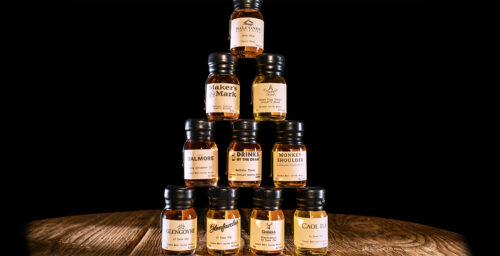Whiskey aging at home is something almost anyone can undertake if you have a little bit of extra cash in your pocket, some room for barrels and plenty of patience. While we aren’t talking here about making your own white whiskey at home from scratch, which is technically a no no according to federal laws, the act of buying someone else’s hooch and putting it into your own casks seems not be an issue at this moment.
Now the first thing you should know as you undertake this new hobby is that your final product won’t likely be as good as what you can buy from a local craft distillery – at least initially. You may not have the background to know what’s best at first for going into barrel and for how long, but it is something you can learn as you experiment. Perhaps someday playing weekend distiller with your barrels will lead to a career in the field, but for now it is likely you best keep the day job.

What you’ll need to get this interest off the ground is quality white spirit, small barrels (there are a bunch of good ones for sale on Amazon), glasses to taste/drink out of
, a small funnel and perhaps a small notebook to track your progress
. There are two ways to go about getting the whiskey and small barrels: buying one of those prefab kits that include a couple of bottles of white whiskey and a charred, new American oak barrel typically in the one to five liter size, or getting hold of quality bottles of spirit from your local liquor store/distillery/online plus the aforementioned barrel in a standalone offering.
As for what kind of white whiskey to get, that’s entirely up to you. In the various experiments this author has thus far done in small barrels, product has ranged the gamut from ryes to single malts to corn (i.e. bourbon). In some instances you can mix these whiskey types if you want to create something really fun (or funky), or add essences of things if you want it flavored, but for the most part the best thing is to keep it simple – one or several bottles of the same base spirit and one barrel. Make sure to roughly match the size of the barrel to the amount of white whiskey you will be adding (though you’ll need to leave a little room for water also – read on for why).
When you get the barrel home, you need to prep it first by swelling it so there are no leaks during your whiskey in barrel aging time. Gently tap the spigot into the small hole in front, if it has one, and then get it to swell. To do this completely fill the barrel through the top hole with hot water, keeping it in a tray or on a dish so if it leaks it doesn’t make a mess. Make sure you top off the water in it as leaking occurs, and eventually it will swell after a few hours to a few days. You’ll know this has happened because the leaking stops. Now empty the water out.
Next, using the funnel you insert into the top hole, gradually empty your white whiskey into the barrel until it is almost full. Top it off with some water, preferably filtered, so you cut the alcohol’s proof down. Put the wood plug into the top hole, store your barrel somewhere away from the direct sun and wait patiently.
From this point forward things get interesting in terms of what comes out of barrel and back into bottle at a time of your choosing, minus the whiskey that naturally evaporates. You should try to taste a small amount of your aging whiskey at least once or twice a month, taking note of the flavor, burn and color (remember that notebook?), until it gets to a place you are happy with. There is no set formula to this in terms of time spent aging, but it is important to know small barrels speed this time significantly compared to larger barrels typically found in distilleries, so make sure to keep up with your pet project’s progress.



